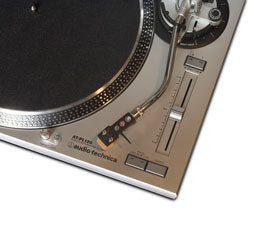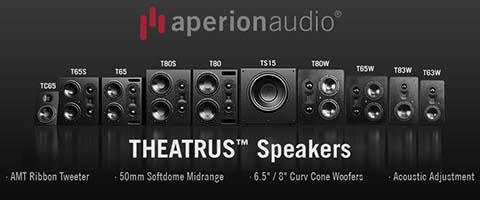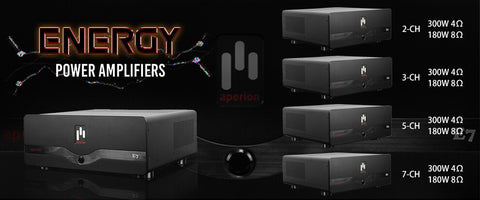By: Jeff Dorgay
Publisher, Tone Audio

You heard right – vinyl, as in LP’s that you probably remember from a long time ago, perhaps even in your parents music collection. Believe it or not, the analog record has been making a strong comeback for about the last 10 years now, and is getting stronger every year. At the end of the 80’s, everyone was ready to write the epitaph for vinyl and a lot of people gave away (and threw away!!) their records expecting “perfect sound forever.” But the LP was a format that just refused to die and with the turntable having a rebirth, it is still a format that music lovers are very interested in. And believe it or not, even a lot of current releases are pressed on vinyl for short runs; usually about 5-10 thousand copies.
Granted it’s not like the old days, where millions of records were sold every month, but record sales have stayed consistent at a few million copies per year, so they are still enjoying solid sales.
Why would anyone want to go that far back in time, in this world of iPods and Squeezeboxes? There are a number of reasons, but most of all, it’s a lot of fun. Call me nostalgic, (or just another almost 50 year old person who is losing their nearfield vision) but I still enjoy holding a large piece of art in my hands where I can actually read the album credits!
A lot of music never made its way to the CD format. If you are more of a collector, rather than just someone interested in the most current music, there is a huge treasure trove of music out there on LP records that you just won’t have access to on CD. This is especially true if your musical tastes stray anywhere from the mainstream path.
While collectors have driven the price of the rare stuff through the ceiling, there is still a lot of great used vinyl to be had, and chances are very good that you probably have a great used record stores a lot closer than you think. It’s always a blast to go to the record store and bring home a pile of records for the cost of a few CD’s!
Many of the major online audiophile retailers have a number of the latest reissues, but my favorite place to buy LP’s is SoundStage Direct. (www.soundstagedirect.com) They have most of the popular “audiophile” pressings and a huge collection of current vinyl pressings. This is by far my favorite place to shop for records, but I’m always on the hunt for more vinyl.
So, once you have decided to get your hands on a turntable, the sky is the limit on budget. There are a few decent entry level turntables, like the Rega P1 that will have you spinning vinyl in no time for about $350 with minimal setup all the way to the hundred thousand dollar (not a misprint!) level. Yes, if you are a crazed LP addict, you could easily have more equity in your record player than your house!
At first glance this task might seem daunting, especially when you see just how many choices that there are but it’s not as hard as you think. Here’s a few things to consider that should put it in perspective:
The most important question is software: Do you have an existing collection of records that haven’t been played for a while that you would like to get back to, or are you starting from scratch? (Sorry about the obvious pun…) Often, this is the most overlooked by the budding vinyl enthusiast who’s just returned from an audio show, dealer or friends house, whipped into a frenzy of analog excitement. Step back and analyze the situation. If you only have a hundred LP’s or so, you might not want to jump of the cliff and spend a few thousand dollars right away. However I have seen turntables in systems worth as much as a decent BMW with 25 records sitting there on the shelf that rarely get played.
We want to avoid that situation. If you have a friend like that, now might be the time to try and talk them out of said turntable. I’ve found that comments like “Dude, no one plays records anymore, you should just get rid of that thing!” at the appropriate moment can pay off in spades!
Next question, hardware: How good is your current system? As much fun as it is to go shopping, to get the most enjoyment out of your first turntable purchase, it’s critical to have the performance of your turntable be fairly close to that of the rest of your system. If you have a decent budget system, as cool as that megabucks turntable will look on the shelf, it’s a waste of performance and money. (that you could spend buying more records!) Conversely, if you have a fantastic system that is capable of resolving a lot of musical detail, getting a budget table won’t offer up enough sound to keep you happy.
There are pretty much two basic kinds of turntables these days: belt drive and direct drive. Most audiophile tables are belt drive, but the direct drive table is making a solid comeback, especially on the entry level with the resurgence of the Technics SL-1200. Yep, this is the table many of us had back in high school and are still in use by DJ’s all over the world today. Cost: About $4-500 brand new (without cartridge) Advantages: bullet proof, excellent speed accuracy, easy to set up. Disadvantages: Ultimately lacking in highest fidelity applications, but can be upgraded somewhat, albeit for the techie minded only.
More common is the belt drive turntable, which uses a small motor, a pulley system and a rubber band like belt to drive the turntable platter. You can find this system in effect from under 200 to over one hundred thousand dollars and is by far the most popular. The belt helps to isolate the platter that your record spins on from the vibration of the motor, and it acts like a natural shock absorber. TIP: Vibration is your turntable’s enemy. Do everything you can to eliminate it from your system, the better your turntable will sound. Don’t put your turntable on top of your subwoofer, no matter how cool it looks there!
A quick detour: Are you a journey person or a destination person? If you like the journey, you will probably be intrigued with the aspects of turntable set up. Should you still want to travel down this path, I suggest Michael Fremer’s DVD: 21st Century Analog. It offers a lot of information on basic turntable setup, walking you through the setup of three very common turntables. You can pick one up at the Needle Doctor for $30 and get a good feel for what you are getting into. I guarantee you will get a few good laughs, as Mr. Fremer is a very funny guy! Perhaps you will be inspired by the shots of his record collection as well.
If you are a destination person and just want to start playing records, make sure you can find a good dealer, online retailer or friend that will properly set up your new turntable. This is definitely the easy way to go and I must admit after chasing the vinyl rabbit down its hole for many years now, isn’t the worst way to go!
Then you will have to think about phono cartridges (the needle) and possibly a phono preamplifier, because you can’t just plug a turntable in to any open input on your amplifier or receiver. The signal from a phono cartridge is at a much lower level than what comes out of your CD player. Again, there are two basic types of phono cartridges, Moving Magnet and Moving Coil. I could write a book on this alone, but to make it simple, the Moving Magnet cartridge is probably the way to go for the beginning to intermediate vinyl enthusiast, as they will plug into most phono inputs, or should you need an outboard phono preamplifier, can get by with a simpler circuit, because the Moving Magnet cartridges have a higher signal output than the moving coil cartridges.
However, the moving coil cartridges will almost always provide you with more detail, resolution and musicality than the moving magnet varieties (there are a few exceptions to this rule, so no nasty letters please…), but they will need a more elaborate phono preamplifier to boost up the tiny signal that comes out of them so that your amplifier or receiver can use it.

If your receiver or integrated amplifier does not have an input marked “phono” Regardless of what you decide to spend on a turntable, one of the most enjoyable things about listening to records is the sound. If you take a peek on any online forum today, you will see major discussions about whether music recorded to LP sounds better or worse than CD, but I think one thing we can all agree on is that analog does have a warmer sound quality, and that is what a lot of hardcore music lovers enjoy.
Is it for you? There’s only one way to find out! Get your hands on a turntable and start spinning. We’ll go further into the intricacies of phono cartridges, phono preamplifiers and turntable setup in the next lesson. We hope you enjoy the journey!

Complete Your Sound System Solution

Sign up for our newsletter below, and join our social media groups to stay up to date with the latest news and information from Aperion Audio!
 |
 |






 https://www.aperionaudio.com
https://www.aperionaudio.com